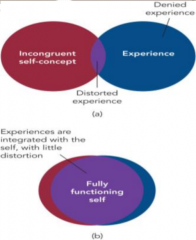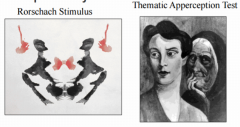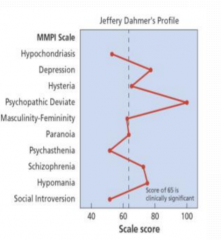![]()
![]()
![]()
Use LEFT and RIGHT arrow keys to navigate between flashcards;
Use UP and DOWN arrow keys to flip the card;
H to show hint;
A reads text to speech;
56 Cards in this Set
- Front
- Back
|
Stress as a(an)… |
• eliciting stimulus – “I am experiencinga lot of stress” • response – “I’m feeling stressed” • Stress is a person-situation interactionOR a “transaction between organismand the environment” Generally: • All types of stress require that we adapt • greater imbalance between demandsand resources = greater stress |
|
|
‘transaction’ means |
Stress is a pattern of responding: • Cognitively • Physiologically • Behaviourally Any circumstance that is perceived asthreatening or challenging and requirescoping |
|
|
What are the key types of Stressors? |
• Catastrophes - Unexpected & large scale • Major negative events - Require majoradaptation • Microstressors - Daily hassles/frustrations |
|
|
Generally, stressors vary in terms of how |
• Intense/severe • long they last/chronic • predictable • controllable Greatest impact on health (physical &psychological) if intense, long-lasting,unpredictable, uncontrollable |
|
|
Stress as a Pattern Overview |
• Cognitive Appraisal - demands, resources, consequences & meaning • Physiological response - Sympathetic arousal & stress hormones • Coping and task behaviours - Behavioural responses tostressors |
|
|
Elements of Cognitive appraisal |
1. What are the demands? (primary appraisal) 2. What resources do I have (to cope)?(secondary appraisal) 3. Consequences of failing to cope? 4. Personal meaning of consequences? |
|
|
Impact on Physical Health:Elements of Physiological Response |
General Adaptation Syndrome • Phase 1 – alarm: mobilize resources • Phase 2 – resistance: Coping with stressor • Phase 3 - exhaustion: Reserves depleted |
|
|
How is stress related to psychologicalhealth? |
• Catastrophic stressors can have long-termpsychological impact on individuals’ lives (e.g.,natural disasters, flooding, hurricanes, war) • E.g., anxiety, depression, post-traumatic stress**Some evidence for impact on cognitivefunctioning as well |
|
|
Impact on physical health |
Increased risk of • physical illness and even death • health problems several years laterIn general, the more major stressors the greaterthe risk of physical illness ** “Broken heart syndrome” – TakotsuboCardiomyopathy (Sato et al, 1990) |
|
|
Increased risk arises from |
• Body’s stress response (hormones) • Reduced immune system functioning • Health-impairing behaviours (e.g., not taking care of health, etc.) • Hormone (cortisol) impact on hippocampus (memory problems) |
|
|
FACTORS that influence coping with stress |
In general, there are: • Vulnerability factors = those that make usmore susceptible to the impact of stressors • Protective factors = environmental/personalresources help us to cope with stressors |
|
|
Social Support = PROTECTIVE Types of support: |
Types of support: • Emotional – address the EMOTIONS of stressor • Appraisal – helps us EVALUATE the stressor • Informational – provide us withINFORMATION to cope • Instrumental – helps us DO things to cope |
|
|
Social Support is effective because… |
• Boosts immune system • Associated with greater sense of identity andmeaning • Releases Negative Emotions |
|
|
Cognitive Factors = PROTECTIVE |
• Hardiness: illustrated by commitment,control, and challenge – the 3 C’s • Coping self-efficacy: perception that you havesufficient resources to cope • Optimism: positive affect, positive outlook forthe future • All may be linked to increased immunefunctioning |
|
|
Personality traits – PROTECTIVE |
• Type B – relaxed, agreeable, easy-going • Conscientiousness – less likely to engage in risky behaviours, drink, smoke; more likely to eat balanced diet, exercise regularly |
|
|
Personality traits –VULNERABILITY |
• Type A – aggressive, time-conscious,competitive, ambitious, hostile • Type C – ‘opposite’ of A – sociable, relaxedBUT inhibit negative emotions |
|
|
Physiological Reactivity –VULNERABILITY |
• Pattern and intensity of physiological response to stress • More intense and prolonged responses result in greater risk to the negative impact of stress |
|
|
Physiological Toughness - PROTECTIVE |
2 elements: • Lower level of cortisol activity at rest & lowerlevel of response to stress • Lower level of catecholamines at rest & strongbut quick response (and return to normal) tostressor |
|
|
Additional factors that make us morevulnerable to stress? |
• Bottling up/disregarding emotions • Isolating oneself • Pessimistic attitude • Poor eating habits (high fat diet) • Insufficient rest, poor sleep habits • Drug/alcohol abuse, smoking |
|
|
Typical Stress Coping Strategies |
• Problem-Focused - confront and deal with problemdirectly • Social Support - turn to others for assistance andemotional support • Emotion-Focused -emphasis on managing theemotional response(CONSIDER CONTROLLABILITY) |
|
|
Differences in strategy use? |
• Both men and women use problem-focused but • Men favour problem-focused approach • Women favour social support and emotion focused approach • Western Cultures favour problem-focused • Eastern Cultures favour social support and emotion-focused |
|
|
What is personality? |
Distinctiveness or uniqueness Consistent over time & situations Personality = “distinctive and enduringways of thinking, feeling, and acting” |
|
|
These “thoughts, feelings, & actions” are: |
Unique to each person caused by “internal factors” Fit together in a distinct fashion to direct behaviour |
|
|
Theoretical Perspectives on Personality |
Different theoretical perspectives explainwhat personality IS and HOW it functions How well does each help us to understand‘individual differences’? |
|
|
Psychodynamic Theory of personality, emphasizes |
The Unconscious directs our behaviours psychic energy needs release Forms of release: sex & aggression |
|
|
Different ‘types’ of mental events: |
Conscious – awareness of currentenvironment Preconscious – information just below thelevel of awareness **Unconscious – information well belowawareness level |
|
|
Levels of Consciousness - digrm |

|
|
|
Structures (parts) of personality: |
Id – pleasure seeking & irrational portion Superego – moral component Ego – component that exists in reality;maintains control over id and superego Potential for psychic conflict |
|
|
The EGO is |
constantly working for balance Concerned about challenges of reality Challenges of impulse control Anxiety results when anxiety cannot be managed, defence mechanisms result (to distort reality) |
|
|
Ego uses Defense Mechanisms to cope with anxiety |
Defense mechanisms -> protection fromanxiety through self-deception, Displacement – divert emotions to safe alternative Reaction formation – exhibit opposite feelings |
|
|
Is psychodynamic theory useful? |
Propositions are hard to test (e.g., peoplebehave lovingly rather than aggressively) Reification of personality components Conception of ‘unconscious’ has merit |
|
|
Humanistic Perspective (e.g., Carl Rogers) ofpersonality says… |
We are directed by forces within us that lead us toward self actualization (greatest potential) |
|
|
Rogers – personality and the “self” |
Personality stems from conscious eventsexperienced by the ‘self’ Organized, consistent set of beliefs Develops through life experiences Influences/directs perceptions & behaviour |
|
|
Rogers – self and congruence |
Concept of self is consistent over time Helps us to understand who we are Goal maintain consistency and congruencebetween self-concept and experience E.g. congruence – I think of myself as kindand I am kind to others |
|
|
Rogers – maintaining congruence |
Incongruence = anxiety When faced with incongruence, one might: Adjust self-concept OR Maintain congruence by: Distorting reality (or reinterpreting) OR acting in ways to be consistent with ‘self’ Well-adjusted people modify self-concept |
|
|
Adjusted or not -digrm |

|
|
|
Innate need for positive regard |
Unconditional positive regard – worth orvalue despite actions and foibles (fromothers & from oneself) Conditional positive regard – value onlyunder certain circumstances UPR = healthy development of the self |
|
|
Research on the self shows: |
Greater self-esteem is associated with: More effective communication with others,happier lives, greater achievement Males = females on GSE but may differ on‘domain specific’ self-esteem |
|
|
Value of Humanistic theory? |
Too much personal report emphasis? What are self-actualizing behaviours? VALUE = ideal vs. perceived self (as markers in therapy) |
|
|
Focus for TRAIT researchers |
Try to determine traits that help to distinguish between individuals Determine those traits that can predict behaviour |
|
|
“Historical” examples of Trait theories |
Allport proposed almost 18,000 How is the # of traits condensed? Factor Analysis – find clusters Central traits? Secondary traits? |
|
|
“Historical” examples of Trait theories |
Other theorists have proposed specificnumbers, e.g., Raymond Cattell said 16 and developedthe 16 Personality Factor Questionnaire |
|
|
Cattell’s 16 Personality Factors |

|
|
|
McCrae & Costa argued for 5 traits |
Openness Conscientiousness Extraversion Agreeableness Neuroticism |
|
|
Eysenck’s (biological) trait theory ofpersonality? |
Emphasized 2 (3) key dimensions Extraversion - Introversion Stability – Instability (Psychoticism – self-control) |
|
|
Eysenck’s theory – biological influence? |
biological differences = personalities differences: Extraversion/introversion – brain arousal Stability/instability – suddenness of autonomic arousal |
|
|
Value of Trait Theories? |
Has provided us with idea of how toidentify, classify and measure personality Currently insufficient emphasis on theinteractions of traits Most theories only DESCRIBE personality |
|
|
Social Cognitive Perspective –key concepts |
Emphasis on internal AND external influences on personality (combined) Reciprocal determinism – personality is influenced by the interactions between a person, his/her behaviours, and the environment |
|
|
Example of S-C Theory: Albert Bandura’s theory of personality? |
Key concept = self-efficacy = perception that youcan behave in a way that leads to desired outcomes 4 factors create differences in self-efficacy:performance experiences, observational learning,verbal persuasion, emotional arousal |
|
|
Bandura’s 4 factors influencing self-efficacy |
Performanceexpectations – previoussuccesses & failures Observational learning –observing others like you Verbal persuasion –messages from others Emotional arousal –excitement or fear |
|
|
Value of S-C Theories? |
Have strong scientific foundations (combination of behavioural & cognitive perspectives) Effectively established constructs that can be defined and assessed |
|
|
How can personality be measured? |
Structured interviews – standard q’s + behav Behavioural assessment – details of behav Remote behaviour sampling – ‘on-line’ or ‘real time’ measure Reports/ratings by others – chars & behav Personality Scales – standardized/objective Projective Tests –ambiguous stimuli Personal websites – preferences, interests, etc |
|

Sample Projective Stimuli |
Projecting patterns and stories that reflect the self |
|
|
MMPI Profile |

Normal onscale = 50 65 = ‘clinicallysignificant’ |
|
|
Theories & Assessment ‘match’ |
Theory Provides framework Assessment Provides ‘tools |
|
|
Who uses which tools? |
Psychodynamic = projective techniques Humanistic = self-report measures Social-cognitive = behavioural assessments Biological = physiological measurements Trait theorists = inventories (MMPI, NEOPI) |

